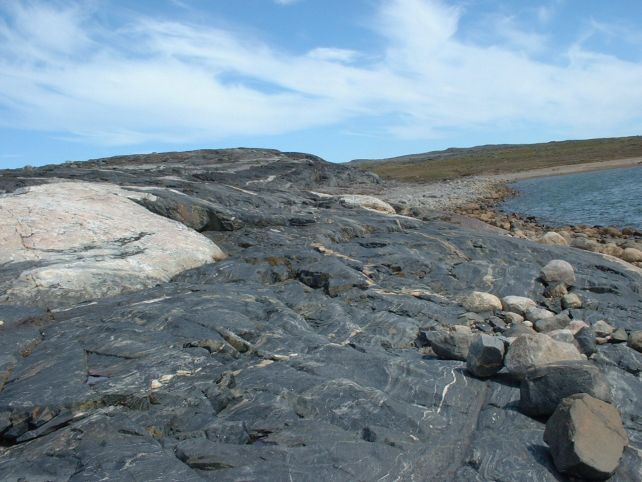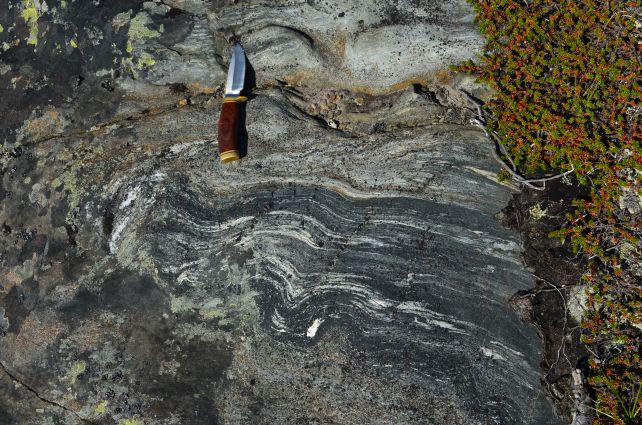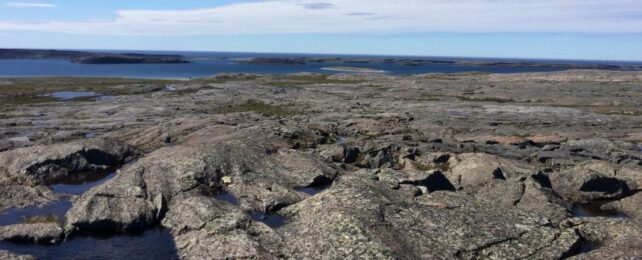A belt of swirly, stripey rock in the northeast reaches of Canada looks like it contains some of the oldest minerals ever found on our planet's surface.
A new dating analysis of minerals in the Nuvvuagittuq Greenstone Belt suggests that parts of the formation could be as old as 4.16 billion years – nearly as old as the planet's 4.54-billion-year age. The results mean that the belt represents one of the best sites for understanding our planet's infancy.
"For over 15 years, the scientific community has debated the age of volcanic rocks from northern Quebec," says geoscientist Jonathan O'Neil of the University of Ottawa in Canada.
"This confirmation positions the Nuvvuagittuq Belt as the only place on Earth where we find rocks formed during the Hadean eon."
Related: We May Have Found Earth's Oldest Known Rock. It Was on The Moon

Earth's surface and crust are always in motion. Tectonic forces from below and weathering influences from above mean that the planet's surface is constantly in flux. For surface features to survive for billions of years is unusual.
Places where ancient minerals have managed to somehow survive the ravages of time are very scientifically valuable. They can tell us what our planet was like as it was forming, before life managed to wriggle its way out of the primordial chemistry.
This has far-reaching implications far beyond our own tiny blue world: since Earth is the only planet on which we know for a fact life exists, how our planet formed, grew, and evolved can help us understand how to find similar planets in the wider galaxy.
Nuvvuagittuq Greenstone Belt has long been eyeballed by scientists as one of these sites harboring Hadean minerals, from the first of Earth's four geological eons, spanning the time of its formation until just over 4 billion years ago. However, previous attempts at dating minerals thought to be ancient returned confusing and inconsistent results, ranging between around 4.3 and 2.7 billion years.

Led by geoscientist Christian Sole of the University of Ottawa, a team of researchers decided to try a different approach. Previous tests had measured the ratios of radioactive atoms and the isotopes of their decay products in the basaltic rock.
The most reliable isotope dating method we have relies on zircon crystals. When it is forming, zircon takes up trace amounts of uranium, but strongly rejects lead. Over time, the uranium decays into lead inside the zircon; so any lead in a zircon crystal has to be from the radioactive decay of uranium. Because we precisely know the decay rate of uranium, the ratios can be used to precisely date the zircon.
Basaltic rock, like the Nuvvuagittuq Greenstone Belt, presents challenging conditions for the formation of zircon, so many previous measurements relied on ratios of radioactive samarium and its decay products, isotopes of neodymium. This is less reliable than uranium-lead dating.
Sole and his colleagues took a new tack. They focused on large inclusions of metagabbro, a type of rock that was originally an igneous rock called gabbro that metamorphosed under heat and pressure inside the planet's crust. These metagabbros intruded on older basalts, so they provide a minimum age for the surrounding basalt matrix.

The team subjected their samples to both lead-uranium and samarium-neodymium dating. Both forms of analysis yielded the same result, even for rocks of different mineral compositions taken from different locations: the minimum age for the Nuvvuagittuq Greenstone Belt is 4.16 billion years.
This result opens up exciting avenues for further research into our planet's earliest days.
"Understanding these rocks is going back to the very origins of our planet," O'Neil says. "This allows us to better understand how the first continents were formed and to reconstruct the environment from which life could have emerged."
The research has been published in Science.
